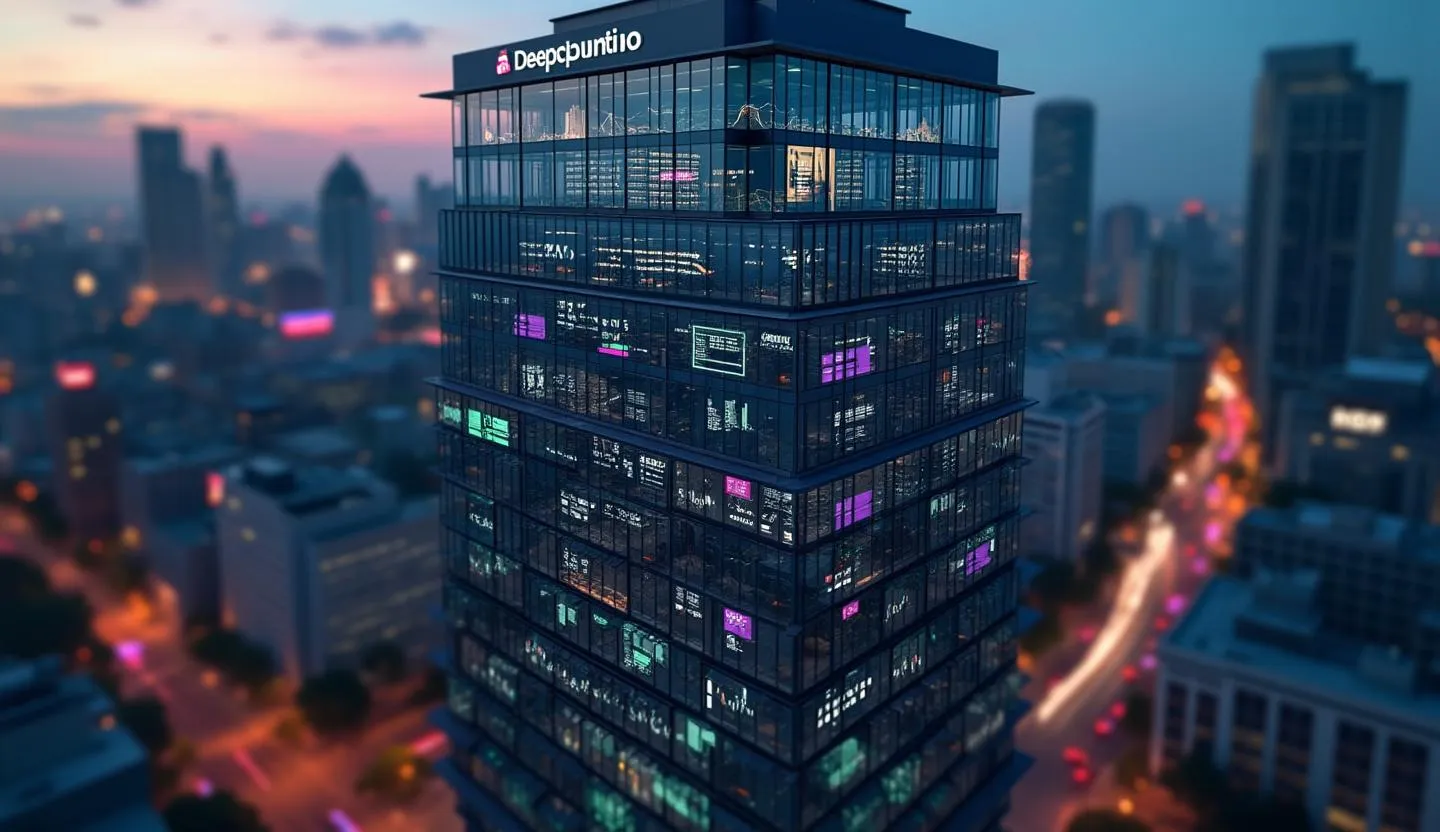A Strategic Shift for BrightSpire: Barclays Issues a Stark Warning with Fresh Underweight Downgrade
Barclays has issued a notable downgrade for BrightSpire Capital, Inc. (BRSP) a commercial real estate finance REIT known for its high-yield profile. The move from "Equal Weight" to "Underweight," and a price target set at $5, comes at a critical juncture for both the stock and the broader commercial real estate sector. With BrightSpire's shares now trading just below this target, the downgrade signals mounting concerns—ones that investors must assess carefully. Analyst actions, especially from globally influential firms like Barclays, are pivotal market signals, often foreshadowing shifts in institutional sentiment and capital flows.
Key Takeaways:
Potential Downside: With the new $5 target versus a current price of $5.03, Barclays projects a marginal downside of approximately 0.6%, suggesting the risk of further underperformance or stagnation.
Stock Price Action: BrightSpire shares have drifted lower, recently hitting their lowest daily volume and showing persistent weakness (down 1.76% in early trading).
Critical Sector Headwinds: Recent news highlights earnings uncertainty, persistent negative sentiment, and the looming risk of dividend cuts amid rising rates.
Divergent Market Views: While some see contrarian value, others highlight deteriorating fundamentals and risk of further income erosion.
Barclays' Downgrade: Context, Confidence, and Sector Implications
The Analyst Call: Barclays' Influence and Rationale
Barclays, a leading global investment bank with significant influence in real estate and credit markets, commands attention when it shifts its stance. The downgrade from "Equal Weight" to "Underweight" is not merely a cosmetic adjustment—it puts BrightSpire on investors' radars as a heightened risk candidate. Barclays' coverage is known for its data-driven, risk-adjusted approach, and its new $5 price target, barely below the market price, signals a view that BrightSpire's risk/reward is skewed to the downside. This move aligns with the firm's cautious outlook on commercial mortgage REITs amid persistent rate pressures and sector-specific headwinds.
Barclays' downgrade stands out for its timing: it arrives ahead of the company's Q2 2025 earnings release (scheduled for July 29), a period often fraught with volatility and guidance resets. The firm's market reach and sector expertise mean this action will likely reverberate across institutional desks, potentially influencing fund flows and peer sentiment.
"The downgrade by a heavyweight like Barclays typically signals deeper institutional concern—especially when paired with a price target set at or slightly below the current market price. This is a clear shot across the bow for income investors betting on a recovery in commercial real estate credit." DeepStreet
BrightSpire's Model: High Yield, High Risk
BrightSpire Capital operates as a commercial mortgage REIT, financing and owning a portfolio of real estate debt and equity investments. Its business model revolves around generating consistent income from interest payments and property-related cash flows—an attractive proposition in low-rate environments. However, as rates have climbed and the office sector has come under increasing stress, BrightSpire's yield (north of 12%) has come to reflect not just opportunity, but also elevated risk.
The firm's exposure to office and multifamily loans, coupled with a significant share of floating-rate debt, amplifies earnings volatility and the risk of non-accruals as credit conditions tighten. The market is effectively pricing in the possibility of further deterioration in asset quality and dividend sustainability, reflected in both sentiment and technical indicators.
Dissecting Recent Price Action and Technical Signals
Stock Performance: Weakness Prevails
Over the past year, BrightSpire has seen its share price slide from a high of $6.71 (July 2024) to recent levels just above $5. The stock's Relative Strength Index (RSI) of 42.7 suggests the shares are approaching oversold territory, but not yet at a major inflection point. Volatility remains subdued, but with the lowest daily trading volume recorded on July 8, liquidity is thinning—a potential warning sign for further downside.
Trend: 115 up days versus 131 down days over the past year; sentiment ratio is below 0.47, underscoring persistent negative momentum.
VWAP: The volume-weighted average price sits at $5.64, well above current levels, highlighting sustained price erosion.
Technical Levels: 20-day EMA ($5.17) and SMA ($5.21) both eclipse the last close, while Bollinger Bands indicate the price is hugging the lower bound ($5.02), suggesting continued pressure.
Financials and Dividend Sustainability: The Core Risk
While BrightSpire offers a headline yield of 12.4%, recent analyses point to thin coverage and the possibility of a cut if earnings or portfolio quality slip further. The company’s heavy exposure to floating-rate loans—once a tailwind—has become a liability as borrowers feel the pinch of higher debt costs. Earnings have been lackluster, with limited signs of growth or improvement in credit quality.
Recent News: Contrarian Bulls vs. Realist Bears
Earnings on Deck: The upcoming Q2 2025 earnings release (July 29) could be a pivotal catalyst. Any negative surprises on credit quality, portfolio valuation, or dividend policy may validate Barclays' bearish view.
Dueling Narratives: Recent commentary on Seeking Alpha is sharply divided. One analyst, undeterred by falling prices, sees value in the sector’s cyclical downturn:
"I'm willing to embrace negative sentiment to enjoy high-yield income, knowing sentiment shifts rapidly. When a sector is down cyclically, it's time to buy it before the cycle shifts." (source)
Yet another highlights the mounting risks:
"The dividend yield is attractive at 12.4%, but coverage is thin and another cut is likely if portfolio quality or income deteriorates further. Heavy exposure to office and multifamily loans, combined with floating rate debt, increases the risk of non-accruals and earnings volatility as rates stay high." (source)
Navigating the Downside: What Does 0.6% Downside Really Mean?
With Barclays’ new $5 target only a hair below the current price, the headline downside appears negligible. However, the true message is a lack of compelling upside and an implicit warning: absent a positive catalyst, downside risks—in terms of both price and dividend—now outweigh potential rewards. In short, the downgrade is less about a dramatic crash and more about "dead money" risk; investors may face prolonged stagnation, volatility, or a slow grind lower.
Should Investors Heed the Warning?
For income-focused investors, the allure of a double-digit yield must now be balanced against the risk of further price decline and possible dividend cuts. Barclays’ downgrade—backed by its sector expertise and cautious view—serves as a red flag for anyone relying solely on headline yield without a close eye on credit quality and sector dynamics.
Final Thoughts: Is There Opportunity in the Gloom?
While some contrarians may see BrightSpire’s battered price and high yield as a speculative play on sector recovery, the weight of evidence—price action, technicals, and now a high-profile analyst downgrade—suggests caution. The upcoming earnings release is the next major inflection point; until then, the market will likely remain skeptical, and the risk of further disappointment looms large.
The Barclays downgrade is a clear signal: tread carefully, focus on credit quality, and don’t chase yield without understanding the risks beneath the surface.

.svg)
.svg)
.svg)
.svg)

.svg)

.svg)
















